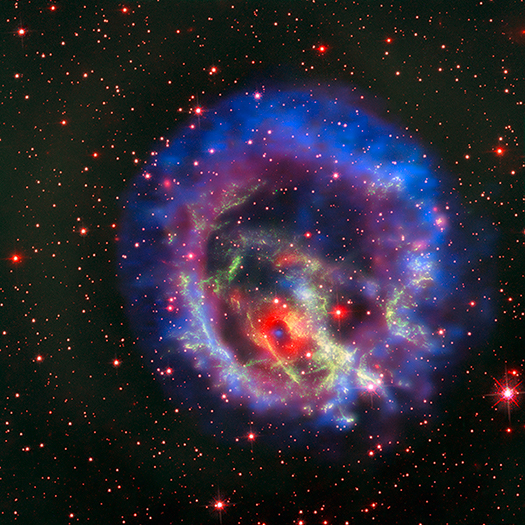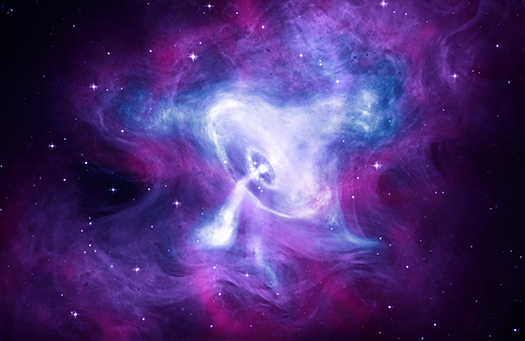Chandra Scouts Nearest Star System for Possible Hazards
Submitted by chandra on Wed, 2018-06-06 11:20A new study involving long-term monitoring of Alpha Centauri by NASA's Chandra X-ray Observatory indicates that any planets orbiting the two brightest stars are likely not being pummeled by large amounts of X-ray radiation from their host stars, as described in our press release. This is important for the viability of life in the nearest star system outside the Solar System. Chandra data from May 2nd, 2017 are seen in the pull-out, which is shown in context of a visible-light image taken from the ground of the Alpha Centauri system and its surroundings.
Alpha Centauri is a triple star system located just over four light years, or about 25 trillion miles, from Earth. While this is a large distance in terrestrial terms, it is three times closer than the next nearest Sun-like star.
The stars in the Alpha Centauri system include a pair called "A" and "B," (AB for short) which orbit relatively close to each other. Alpha Cen A is a near twin of our Sun in almost every way, including age, while Alpha Cen B is somewhat smaller and dimmer but still quite similar to the Sun. The third member, Alpha Cen C (also known as Proxima), is a much smaller red dwarf star that travels around the AB pair in a much larger orbit that takes it more than 10 thousand times farther from the AB pair than the Earth-Sun distance. Proxima currently holds the title of the nearest star to Earth, although AB is a very close second.










